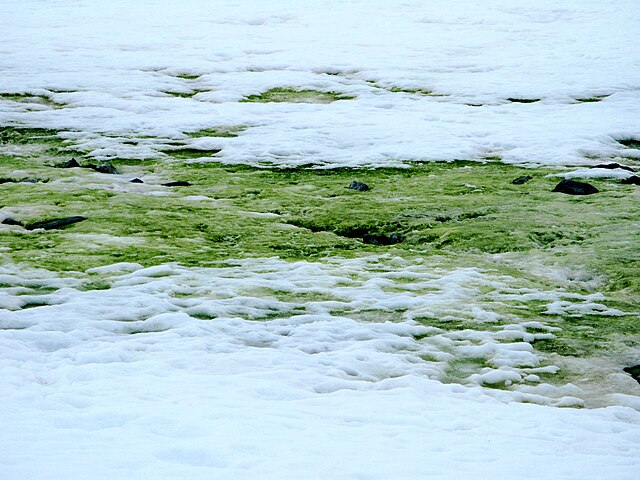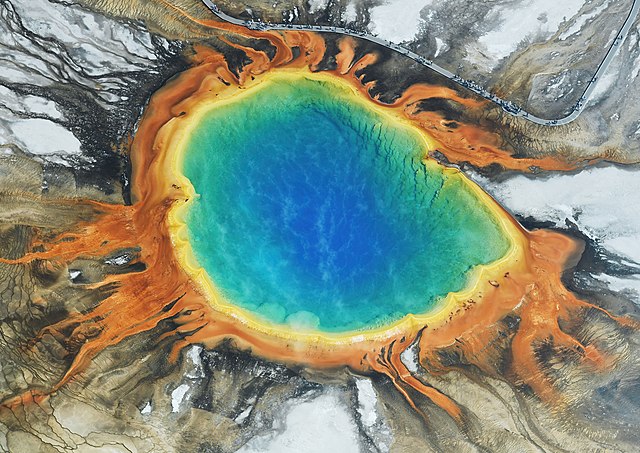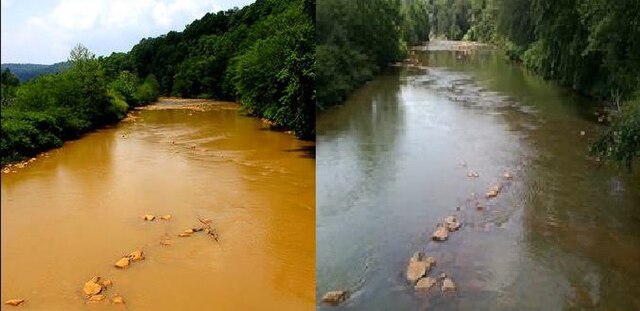Psychrophiles or cryophiles are extremophilic organisms that are capable of growth and reproduction in low temperatures, ranging from −20 °C (−4 °F) to 20 °C (68 °F). They are found in places that are permanently cold, such as the polar regions and the deep sea. They can be contrasted with thermophiles, which are organisms that thrive at unusually high temperatures, and mesophiles at intermediate temperatures. Psychrophile is Greek for 'cold-loving', from Ancient Greek ψυχρός (psukhrós) 'cold, frozen'.
The lichen Xanthoria elegans can continue to photosynthesize at −24 °C.
Snow surface with snow algae Chlamydomonas nivalis.
Psychrophilic algae can tolerate cold temperatures, like this Chlamydomonas green algae growing on snow in Antarctica.
Antarctic diatom algae covering the underwater surface of broken sea ice in the Ross Sea.
An extremophile is an organism that is able to live in extreme environments, i.e., environments with conditions approaching or stretching the limits of what known life can adapt to, such as extreme temperature, pressure, radiation, salinity, or pH level.
The bright colors of Grand Prismatic Spring, Yellowstone National Park, are produced by thermophiles, a type of extremophile.
Diversity of extreme environments on Earth
Microscopic image from the hypersaline Lake Tyrrell (salinity> 20% w/v), in which the eukaryotic chlorophyte, Dunaliella salina, can be tentatively identified. Dunaliella salina is grown commercially for the carotenoid, β-carotene, which is widely used as a natural food colorant as well as a precursor to vitamin A. Alongside is the haloarchaeon, Haloquadratum walsbyi, which has flat square-shaped cells with gas vesicles that allow flotation to the surface, most likely to acquire oxygen.
This is a before and after picture of a cleanup project of the Little Conemaugh River. Photo Credit: Rosebud Mining Company.








